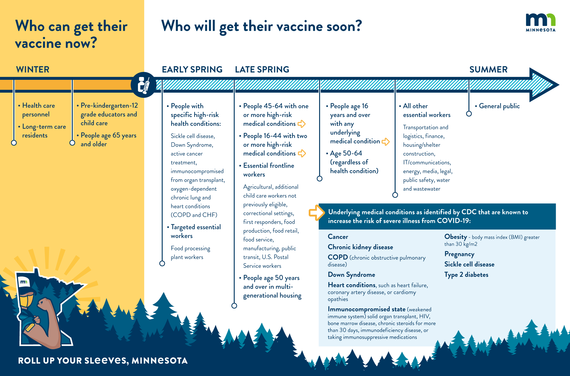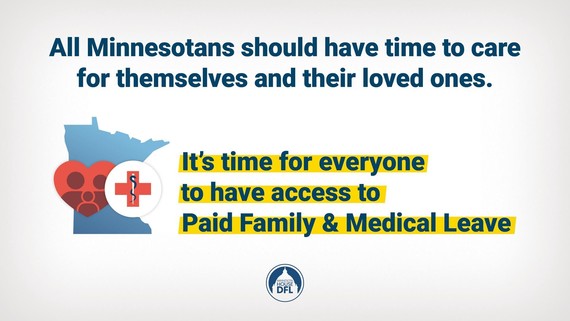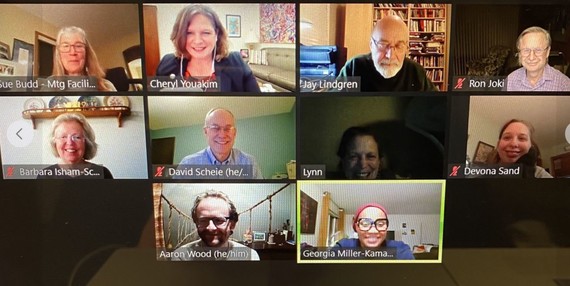|
Committees are working hard to pass bills in time to meet our self-imposed deadlines in the House and Senate. March 12 is the first deadline when a policy bill needs to go through all House and Senate committees that have an interest in it, and move to the floor or be included in a larger bill. The second deadline, March 19, is when the companion of that bill has to follow the same path in the other body. And on April 9, all bills that have a fiscal impact must make their way through the committee process and into a larger Finance bill or to the Ways & Means Committee in the House or the Finance Committee in the Senate.
Budget Forecast Announced
Twice each year, near the end of November and February, Minnesota Management & Budget (MMB) produces a forecast of the state’s General Fund revenues and expenditures for current and future bienniums. Based on the announcement from today, there is no longer an anticipated shortfall for 2022-23 fiscal year. The projected positive balance is due to higher revenue forecast, lower state spending, and an increased balance for the current fiscal year.
We are on track to build a balanced budget in Minnesota; one that protects critical investments in the things we value, like good schools, affordable health care, and economic security for those hit hardest by the pandemic.
Here’s an update from the Capitol:
COVID-19 Vaccine Update
Yesterday, Governor Walz announced a goal to vaccinate 70 percent of the state’s seniors by the end of March. Once we reach this benchmark, eligibility for the vaccine will expand based on underlying health conditions and risks of workplace exposure.
Based on current projections, the next group of Minnesotans who are eligible for a vaccine will begin receiving them in April and everyone should be able to get one by this summer. However, these projections may change as the vaccine supply Minnesota receives from the federal government is adjusted.
I encourage you to sign up for the Vaccine Connector to stay informed on your eligibility and get connected to vaccine opportunities once they’re available. I know that there is a lot of frustration and anxiety with the lack of perceived progress, but almost 15% of Minnesotans have been vaccinated, and Minnesota will be receiving increased vaccine doses from the Federal government in the next few weeks.

Supporting Paid Family and Medical Leave
Minnesotans shouldn’t have to choose between a paycheck and taking care of a newborn, an ill loved one, or themselves. On Tuesday, the House Early Childhood Education Committee discussed the Paid Family and Medical Leave bill. This was the first of its many stops. The legislation provides workers with up to 12 weeks of paid family and medical leave so that they can take time off to bond with a new child, care for an aging parent, or seek treatment for a serious illness while receiving a percentage of their regular wages. Employees and employers will both contribute to the fund that will help pay these benefits.
Research has shown that paid family and medical leave programs help increase breastfeeding rates; reduce infant deaths; increase labor force participation and employee retention; and increase lifetime earnings and retirement security, especially among women, who are already more likely to live in poverty during retirement.

Legislation Advancing
This week, my legislation to provide paid training for our education support professionals/paraprofessionals received its second hearing in the House Education Finance Division. I’m pleased to share it’s being considered for final inclusion into the larger education budget bill, and I’ll continue to advocate for its passage into law. These hardworking members of our education teams deserve no less.
Also this week, I presented a bill in the House Taxes Committee that would continue a tax credit for the historic rehabilitation of structures. Currently, it is set to expire or “sunset” soon. In the ten years that the Minnesota Historic Tax Credit has been enacted, there have been 180 projects across the State that have supported over 1,800 jobs, and pumped millions of dollars into local economies. MinnPost wrote a story about the bill recently and you can read more about it here.
Another bill I had up in the Taxes Committee this week would help fund new, low-income housing development in St. Louis Park by allowing municipalities to transfer excess funds from tax increment financing (TIF) into their Affordable Housing Trust Funds (AHTF). AHTFs are a tool that helps cities provide developers funds to include affordable housing in their rental projects. The bill will also help city’s provide funds for affordable owner occupied homes and units. The bill is being considered for inclusion in a larger tax bill.
Constituent Visits
While COVID has put a halt to constituents visiting us in St. Paul, it has opened up increased access on zoom for those who cannot make the trip to St. Paul. This week, I hosted a Community Conversation. I also had the chance to meet with constituents from the Epilepsy Foundation, CPAs, the American Heart Association, St. Louis Park Community Education, and folks attending Fund our Futures Rally Day.

2021 Survey
I hope you’ll take a moment to fill out my online legislative survey. Hearing from our Hopkins and St. Louis Park neighbors is very important to me, and I’d love your feedback on a variety of issues facing the legislature this year. The survey will be open until March 14 and I look forward to your responses.
Keep in Touch
Please continue to contact me anytime with feedback and questions. Email is the fastest way to reach me these days, and my email address is rep.cheryl.youakim@house.mn. My phone number is 651-296-9889.
Thank you for the honor of serving you and your family in the Minnesota House.
Have a great weekend.
Warmly,

Cheryl Youakim
State Representative
|